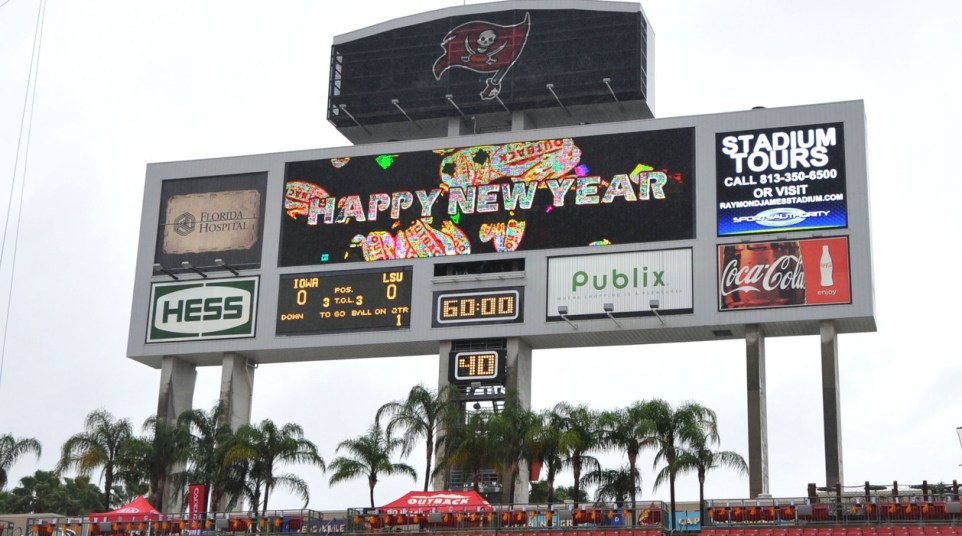Report: Bowl payouts on the rise, sponsorships wavering
Has the bowl system gone too far?
With payouts on the rise, sponsors jumping off of bowl games as quickly as they sign on and more and more teams participating in bowl games every year, there may be a problem.
Jon Solomon from CBS Sports posted a report on Friday on the growing size of the bowl system, and the picture he paints isn’t all rosy.
One positive from Solomon’s report is that the SEC will take home the highest bowl payout and surplus of any conference, thanks to the record 12 teams the conference has sent bowling this year. SEC teams will be paid a combined $55.9 million, with a surplus of $38.7 million after school expenses.
Here are some of the highlights from Solomon’s piece.
Payouts on the rise
The Power Five conferences will nearly double their financial dollars in the CFP compared to the Bowl Championship Series. The SEC, Big 12, Big Ten, Pac-12 and ACC each receive $50 million as a baseline amount from the first year of the playoff. The Group of Five conferences remaining from the FBS share $75 million (more than five times what they received in 2013).
Payouts are increasing for lower-tiered bowls as well. For example, the Music City Bowl’s payout per team went up from $3.4 million to $5.5 million.
Thirty-five bowls paid $309.9 million to the 10 conferences and independents in 2013-14, according to NCAA data. When factoring out institutional bowl expenses reported by the participating schools, the conferences/independents had a surplus of $212.2 million. The FBA expects the total payout to increase by 20-25 percent this year.
Sponsorships moving around
Lost for some time in this bowl world is brand recognition. Bowl games are no different than other parts of corporate America, where the trend now is for shorter title sponsorship deals.
Sixteen returning bowl games have a new name this year. Some of them are subtle changes. Others are pretty significant, such as the Gator Bowl losing Gator entirely and turning into the TaxSlayer Bowl.
If you go to a bowl sponsored by AdvoCare V100, you’re now in Houston, not Shreveport, La. If you’re at a bowl sponsored by Buffalo Wild Wings, you’ll find yourself in Orlando, not Scottsdale, Ariz. The Fight Hunger Bowl, once starved for a title sponsor after losing Kraft, can now feed itself as the Foster Farms Bowl. Returning bowls in Birmingham and Hawaii, both owned by ESPN, don’t have title sponsors.
“You’d like to have stability and create a brand,” Ramsey said. “But you’re so crunched to meet the payout guarantees every year that when you only have limited revenue opportunities with title sponsorship, TV rights and ticket sales, you’ve got to negotiate to get the title sponsorship at maximum value. That’s just the nature of the industry.”
Size of the system
Solomon had officials give conflicting views on the rapidly growing size of the bowl system.
Growing bowl schedule is not bad
Scott Ramsey, president of the Music City Bowl and who has an attractiveLSU-Notre Dame matchup this season, falls in the camp that bowl proliferation doesn’t matter much.
“I don’t think having 39 or 30 games will matter to the individual fan bases,” Ramsey said. “For us, it’s whether Nashville is an attractive destination and is pairing these teams together enough to make you come or watch?
Growing bowl schedule creates a problem
Then there’s the camp belonging to TaxSlayer Bowl president Rick Catlett, who believes the number of bowls have hurt the system.
“I think there are a whole lot of bowl directors who fear waking up in the morning, and instead of their thought process being how do we make it work, a lot of them worry about themselves,” Catlett said. “It’s easy for me to say. I’m 22 years in the business. I get some of the guys in their second or third year feeling that way. We have to fix the system, the postseason experience, and I think we’re moving in that right direction.
“Will the playoff take some of the luster off some of the other bowls? No. Having 38 bowl games has taken the luster off it. It won’t be the new system, it will be the overabundance. When Bobby Bowden used to say he’s been to 16 straight bowl games, that really meant something back in the ’80s and ’90s. It doesn’t mean a whole lot.”
Ten years ago, 48 percent of Football Bowl Subdivision teams played in bowls. This season, 59 percent of the FBS will be in the postseason. A quarter of this year’s bowl teams beat zero or one FBS teams that finished with a winning record.
Ticketing issues
Make no mistake: Fans are well aware how easy it is to buy cheaper tickets at places other than their school or the bowl.
At times this month, though, a fan could purchase a ticket to the Orange Bowl through TicketCity for $2. Orange Bowl spokesman Larry Wahl said that could be due in part because the vast majority of fans who bought Orange Bowl tickets in advance were guaranteed the chance to buy CFB semifinal tickets at the Orange next year. If you don’t want Georgia Tech-Mississippi State tickets that came with it, you put them on the market.
“The secondary market is so commonplace now that it’s really hard to track where your ticket buyers are coming and understanding what the trigger is they really want,” Ramsey said. “Is it location? Destination? Price? Matchup? It’s really difficult to get your arms around on that and it’s something nationally we have to collectively look at.”
Last year, conferences absorbed $14.1 million in bowl ticket expenses and schools absorbed $9.6 million. It’s worth noting there are schools selling out their ticket allotments fast this season. Conferences reduced the number of tickets schools must buy from bowls, in some cases cutting the allotment in half.

